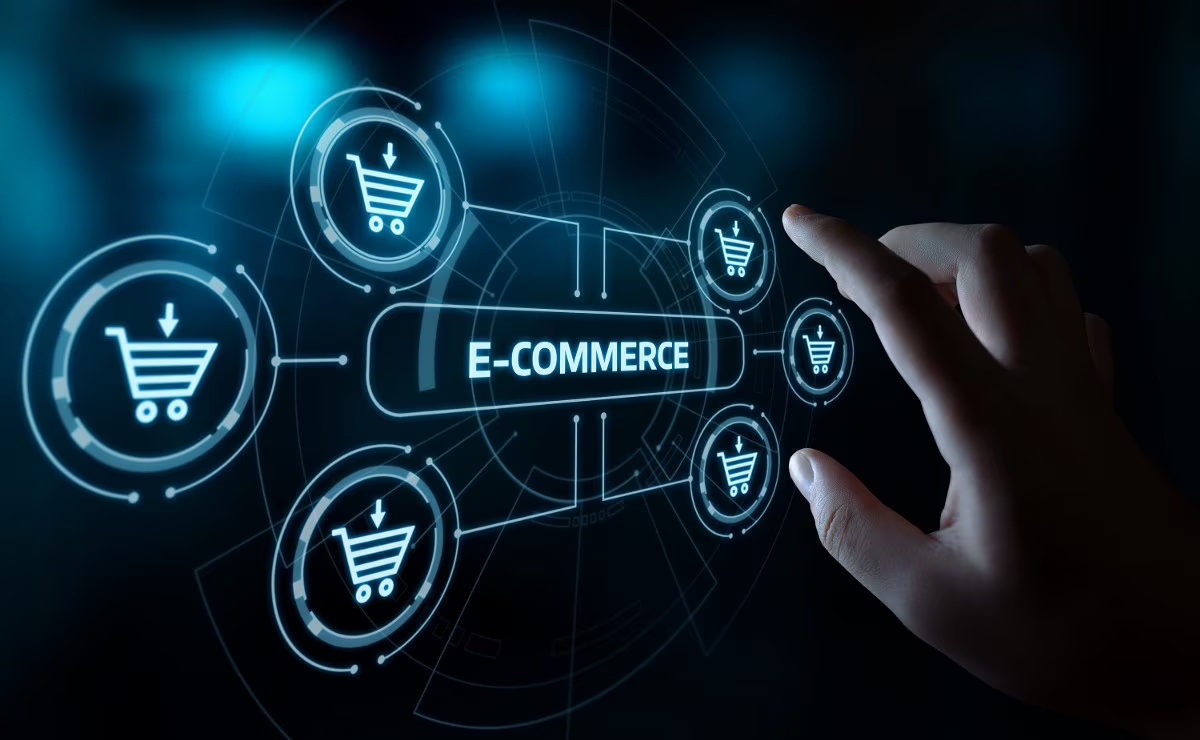E-commerce has witnessed explosive growth over the past few decades, and its impact on global commerce and consumer behavior has been profound. What began as a simple way to buy and sell goods online has evolved into a dynamic, ever-changing industry that influences almost every aspect of business and society. As we look to the future, it’s clear that e-commerce will continue to transform in ways that reshape how we shop, how businesses operate, and how products and services are delivered to consumers.
In this article, we’ll explore the key trends shaping the future of e-commerce, highlighting the technologies, strategies, and shifts in consumer behavior that will define the digital marketplace of tomorrow.
1. The Rise of Artificial Intelligence (AI) and Machine Learning
1.1 Personalized Shopping Experience
Artificial Intelligence (AI) and machine learning are already making a significant impact on e-commerce, and their influence is set to grow exponentially. AI-powered algorithms can analyze vast amounts of consumer data to predict behaviors, personalize product recommendations, and tailor marketing strategies. By using AI to understand customer preferences, e-commerce businesses can create a more personalized shopping experience, increasing conversion rates and customer satisfaction.
For example, websites like Amazon already use AI to recommend products based on previous searches and purchases. In the future, these algorithms will become even more sophisticated, enabling hyper-targeted recommendations and personalized content delivery.
1.2 Virtual Shopping Assistants
Chatbots and virtual assistants are expected to become more intelligent and ubiquitous in the e-commerce space. These AI-driven tools help customers navigate websites, answer queries in real-time, and provide assistance with orders. As natural language processing (NLP) technology improves, these virtual assistants will become more capable of offering human-like interactions, making the shopping experience smoother and more efficient.
2. Voice Commerce: Shopping with Your Voice
2.1 The Growing Role of Smart Speakers
Voice commerce (also known as v-commerce) is another trend that is gaining momentum. With the rise of smart speakers like Amazon Echo, Google Home, and Apple HomePod, consumers can shop online by simply using their voice. Voice search and voice commands will revolutionize how consumers find and purchase products.
In the future, voice commerce could become more integrated with social media platforms, allowing users to make purchases through voice commands directly from apps like Instagram, Facebook, or Pinterest.
2.2 Integration with Voice-Activated Devices
As voice recognition technology improves, it is likely that more devices will integrate voice shopping capabilities. The convenience of making hands-free purchases will appeal to consumers who are looking for a more seamless and efficient shopping experience. From ordering groceries to buying electronics, voice commerce could become an integral part of daily life.
3. Mobile Commerce (M-Commerce): The Shift to Smartphones
3.1 Mobile-First Shopping Experience
The rise of mobile devices has already transformed e-commerce, but the future will see mobile commerce (m-commerce) take on an even more significant role. Consumers now expect to shop from their smartphones and tablets, whether they are in their homes or on the go. According to recent studies, mobile commerce is expected to continue its upward trajectory, accounting for a significant share of all e-commerce sales in the coming years.
For businesses, having a mobile-optimized website and offering seamless, mobile-friendly shopping experiences will be crucial to staying competitive in the digital marketplace. This includes implementing mobile payment options, fast-loading mobile sites, and simple navigation.
3.2 Mobile Payment Systems
Mobile payment systems like Apple Pay, Google Pay, and Samsung Pay are becoming increasingly popular. These systems enable consumers to make purchases quickly and securely without needing to enter credit card information every time they shop. The use of digital wallets and one-click payment solutions will continue to grow, simplifying the purchasing process and enhancing the customer experience.
4. Augmented Reality (AR) and Virtual Reality (VR) in E-Commerce
4.1 Virtual Try-Ons and 3D Product Visualization
Augmented Reality (AR) and Virtual Reality (VR) are expected to play a significant role in the future of e-commerce, particularly in industries like fashion, home goods, and beauty. AR allows customers to virtually try on products or visualize how an item will look in their homes before making a purchase. For example, furniture retailers like IKEA already use AR technology to allow customers to see how furniture would fit into their living spaces via their mobile apps.
As AR and VR technologies improve, these tools will become even more immersive, helping consumers make more informed decisions and reducing the likelihood of returns.
4.2 Enhanced Shopping Experiences
With the help of AR, customers can engage in more interactive and dynamic shopping experiences. For instance, virtual showrooms and interactive advertisements may become more commonplace, offering customers the ability to explore products and services in a virtual environment before committing to a purchase.
5. The Shift Toward Subscription Models and Direct-to-Consumer (DTC)
5.1 Subscription Boxes and Personalized Services
Subscription-based e-commerce models are growing rapidly, with businesses offering everything from monthly beauty boxes to curated clothing subscriptions. This model provides consumers with convenience, surprise, and personalization. Brands like Birchbox, Stitch Fix, and HelloFresh are leading the way in delivering personalized products based on customer preferences.
As consumer demands for convenience and tailored experiences increase, the subscription model will likely continue to expand into new markets and industries, offering products that cater to unique customer needs.
5.2 Direct-to-Consumer (DTC) Brands
The Direct-to-Consumer (DTC) model cuts out the middleman and allows businesses to sell products directly to consumers through their websites, bypassing traditional retail channels. Brands like Warby Parker, Glossier, and Dollar Shave Club have found success with the DTC model by offering consumers more control over their shopping experience and often providing products at a lower price point.
In the future, more brands will adopt the DTC approach, especially as e-commerce technology continues to make it easier for businesses to reach customers directly.
6. Sustainability and Ethical Consumerism in E-Commerce
6.1 Consumer Demand for Sustainable Products
As concerns over climate change and environmental impact grow, consumers are becoming more aware of the sustainability practices of the brands they support. The future of e-commerce will see increased demand for eco-friendly products, transparent supply chains, and brands that prioritize sustainability.
E-commerce businesses will need to respond to this trend by implementing sustainable practices, such as using eco-friendly packaging, reducing carbon emissions in logistics, and promoting ethical sourcing.
6.2 The Role of Green Logistics
As more companies work toward achieving carbon neutrality, logistics and supply chain management will need to evolve. Sustainable shipping options, including carbon-neutral delivery services and eco-friendly packaging, will become more widespread. Companies will also need to streamline their supply chains to reduce waste and environmental impact.
7. Social Commerce: The Integration of E-Commerce and Social Media
7.1 Shopping Directly from Social Media Platforms
Social media platforms like Instagram, Facebook, and TikTok are increasingly becoming shopping destinations in themselves. Social commerce enables consumers to make purchases directly from these platforms without ever leaving the app. This seamless integration of e-commerce and social media is reshaping how brands engage with customers.
Influencer marketing, live-streaming, and shoppable posts are becoming more common, enabling consumers to shop in real-time and interact with brands in a more personalized way. In the future, social commerce will continue to evolve, with social platforms becoming integral parts of the shopping journey.
7.2 User-Generated Content and Reviews
Consumers increasingly rely on user-generated content (UGC) and product reviews to make purchasing decisions. E-commerce platforms are integrating more UGC features, such as customer reviews, photos, and videos, to help build trust and credibility with potential buyers. Brands that encourage and utilize UGC will be better positioned to connect with their audience and drive sales.
8. The Role of Blockchain Technology in E-Commerce
8.1 Enhanced Security and Transparency
Blockchain technology is gaining traction in e-commerce for its ability to provide secure, transparent, and decentralized transactions. In the future, blockchain could be used to verify product authenticity, reduce fraud, and streamline payment processes.
For example, blockchain could be used to track the journey of a product from manufacturer to consumer, ensuring transparency and reducing the risk of counterfeiting. It could also facilitate faster and more secure cross-border payments, eliminating the need for intermediaries.
8.2 Smart Contracts and Decentralized Marketplaces
Smart contracts, which are self-executing contracts with terms written directly into code, could revolutionize how transactions are conducted in e-commerce. These contracts can automate payment and delivery, ensuring that both parties meet their obligations without the need for intermediaries. In the future, decentralized marketplaces powered by blockchain could offer consumers greater control over their transactions and reduce reliance on centralized platforms.
9. Conclusion: The Future is Digital, Dynamic, and Connected
The future of e-commerce is set to be defined by cutting-edge technologies, changing consumer expectations, and the continued blurring of boundaries between digital and physical experiences. Artificial intelligence, voice commerce, mobile shopping, and augmented reality will enhance convenience and personalization, creating a seamless and immersive shopping experience for consumers.
As businesses continue to adapt to these trends, e-commerce will not only remain a dominant force in global commerce but also pave the way for new models of business and consumer interaction. Those who can harness the power of emerging technologies, provide personalized services, and prioritize sustainability will be well-positioned to thrive in the digital marketplace of tomorrow.

